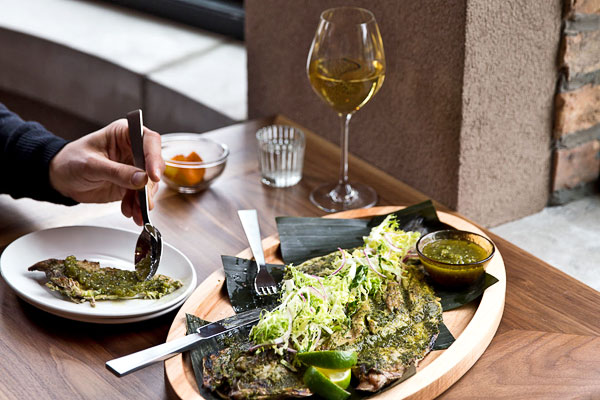In case you've been enjoying a total media blackout, Restaurant Week is underway, which means that more than 300 of Chicago’s restaurants create prix fixe meals at various price points in order to entice diners to visit during one of the slowest business periods of the year. The rules are simple: dinner can be $44 or $33; lunch and brunch are $22. The rest is up to the restaurant, and the menus are all posted online.
If you’re careful during Restaurant Week, you can get some good values and some great food. But if you’re not, it’s easy to actually lose money during this “bargain” week.
Lose money? But how, you might ask? Restaurants want to get you in and give you a great bargain so you’ll come back, right?
Whether through bad math, dumbness, or a desire to make a little extra money, a lot of Restaurant Week menus are just bad deals. If you could go to the restaurant and order the same dishes on a normal day and pay less than the prix fixe price ($44, $33, or $22), then you’re actually paying a premium for fewer choices, larger crowds, and cheaper ingredients.
That’s why we did the math. On every single Restaurant Week Menu. Thanks to the tireless work of myself and (mostly) our intern, Christian, we can tell you when you’re getting a bad deal and, sometimes, when you’re getting a particularly good one.
Every year, more and more restaurants, either through connivance or experimentation, make this calculation harder by inventing new dishes for Restaurant Week that aren’t on the restaurant’s normal menu. When that happens and we can’t compare prices, we note it, and I provide some scintillating color commentary informed by the items on the menu, my thoughts on the restaurant, and how late at night I was up doing these calculations.
Now, a few ground rules before we get 2,000 emails from torch-wielding chefs and diners:
- If you can get a bad deal, the restaurant is highlighted in red. Note that language—if you can get a bad deal. Some red restaurants may still be worth visiting based on how you order. However, you have to be careful.
- If a restaurant is highlighted in green, it means that I’m a particular fan of it for some reason—either the menu looks great, the value is amazing, or both.
- We made a few math assumptions. Desserts are generally “worth” $8, unless they are gelato/ice cream, in which case they are “worth” $4. Soups are assumed to be cup servings.
- Keep in mind when a restaurant is red or “barely” a value: Many places decrease portion sizes during Restaurant Week. So when we say it’s a bad deal, it might actually be a slightly bad or an incredibly bad deal. There’s just no way for us to know.
- I guarantee we made mistakes. There are about five million calculations embedded in this, all of which were done by fallible people who are not math majors. If you have a concern, email me at foodieanthony@gmail.com and I’ll take a look and try to fix it.
After looking at 500 or so Restaurant Week menus, I’ve also got some general tips for diners who are looking to get the best possible value out of their Restaurant Week experience, even if they don’t want to look at a spreadsheet. Here is my acquired wisdom:
- Keep an eye out for certain menu items that tend to pop up during Restaurant Week because, well, they’re not very expensive. The sheer volume of Atlantic salmon that suddenly swims onto menus could fill, well, the Atlantic. The same with short ribs, which are everywhere during Restaurant Week. And there must be a nationwide surplus of pumpkin, given how many menus it's appearing on. If you like these things, bully for you, but know that you’re probably getting a slightly different ingredient experience than the normal menu.
- Any restaurant that has a menu that doesn’t follow a traditional appetizer-entrée-dessert format (see: sushi, tapas) has a really hard time making a Restaurant Week menu work. They end up throwing in desserts no one would actually order, or so many courses that you’ll be dining for four hours. Take a hard look at any of these.
- If you’re a vegetarian, I love you, but consider giving Restaurant Week a hard pass. If the restaurant is going to break even with a filet mignon, you know where they’re making up the money? Your lentils.
- Use your skeptical consumer brain and ask a lot of questions. At a steakhouse that boasts only prime filets, but makes no mention of meat quality on the Restaurant Week menu? Ask. At a restaurant that sources all their veggies from local farms but notes no provenance on the Restaurant Week menu? This might be the week they bought it from U.S. Foods instead, and your experience won’t be as good.
Good luck, and have a great Restaurant Week 2018!
Please click here to view the spreadsheet in a new window.



